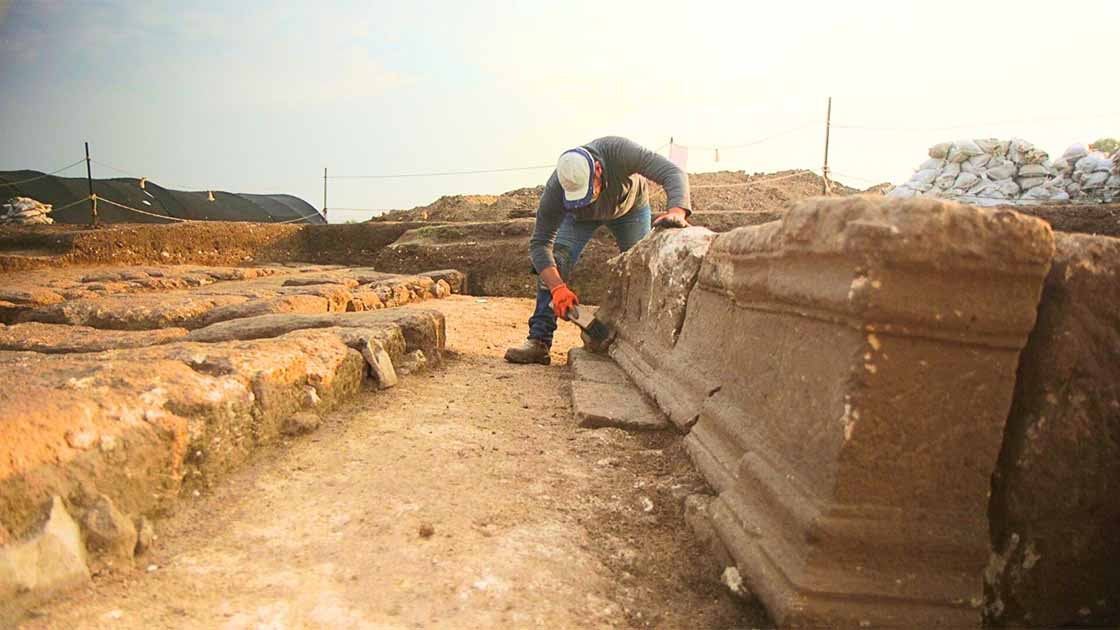Archaeologists Unearth Largest Roman Legion Base in Israel
Archaeologists excavating at the foot of Tel Megiddo in Israel have uncovered “the largest Roman base” ever discovered in the country. Here, during the Roman occupation of Judea, a colony of highly-trained invading soldiers carefully planned their acts of mass-violence against the Jews.
Tel Megiddo is situated in northern Israel on the western edge of Jezreel Valley, about 30 kilometers [18.64 miles] south-east of Haifa. Under its Greek name, ‘ Armageddon’, Megiddo is known for its historical, geographical, and theological importance. During the Bronze Age, Megiddo was an important Canaanite city-state, and in the Iron Age it became a royal city in the Kingdom of Israel, with King Solomon rebuilding it as a military stronghold.
Recent excavations by the Israel Antiquities Authority [IAA] at the foot of Tel Megiddo, near the ancient village of Kfar Othnay (Capercotnai), have revealed the remains of an expansive 1,800-year-old Roman Legion military base. And it was from here that the invading Romans ventured outwards into northern Israel, bringing the traditional farmlands into the growing folds of the Roman Empire.
- More than Battles of Armageddon: The Forgotten Story of Megiddo
- Canaanite Genomes Reveal Truth About Their Descendants

Aerial view of the ruins of the Roman Legion base discovered at Tel Megiddo. (IAA)
Tracking the Course of Roman Roads
An article in Jewish Press explains that the recent excavations were conducted by Dr. Yotam Tepper and Barak Tzin, both working for the IAA. The dig was funded and directed, however, by the Netivei Israel National Infrastructure Company, as they were upgrading Route 66 from Megiddo Junction to the Hatishbi Junction at Yoqn‘eam.
Archaeologists first identified parts of the Via Pretoria (Roman road) which led to a large semicircular podium. Then, following the remains of paving-stones, the researchers found a large, monumental public building which they describe as being “bigger in dimensions than any other Roman remains discovered in Israel.”
So far, hundreds of Roman coins, fragments from weapons, and pieces of pottery and glass have been uncovered, but the site was identified after symbols of the VI Roman Legion were found stamped onto roof tiles, floor paving and wall coatings.
- The Roman Legions: The Organized Military Force Of The Roman Empire
- 6 Ways Roman Engineers Were Way Ahead of Their Time

Fragments of roof tiles and paving tiles, bearing the mark of the VI Roman Legion (IAA)
When Wheat Grows in Violent Soil
To date, six seasons of archaeological excavations have been carried out at the Megiddo Roman base, and it is known that the northeastern part of the camp extends alongside Route 66. However, the bulk of the site now lies under the wheat fields of Kibbutz Megiddo. Dr. Tepper told JPost that two main Roman roads intersected at the center of the “550 m long and 350 m wide camp.” Serving as the headquarters of the VIth Imperial Roman Legion. He added that the camp was “a permanent military base for more than 5,000 Roman soldiers for more than 180 years, from 117–120 to about 300 [AD].”
Moreover, Tepper explained that from this base “all the distances along the Roman Imperial roads to the main cities in the north of the country were measured and marked with milestones.” And accounting for the dilapidated state of the buildings, Tepper said “most of the building blocks have been removed over the years for reuse in construction projects carried out during the Byzantine and Early Islamic periods.”
Not the First, But the Biggest
This site is not the first Roman camp to have been excavated in Israel, but Dr. Tepper said all of the others were “temporary siege camps, or small camps belonging to auxiliary divisions.” He added that no other Roman site in Israel comes close to the scale of this legionary base next to Megiddo Junction.
The dating given to this Roman base means it was operational during 132 AD, when Simon bar Kokhba led the Bar Kokhba revolt against the Roman Empire. Lasting until 136 AD, this was the third and final escalation of the Jewish–Roman wars, and like the previous rebellions, this too ended in the slaughter and enslavement of Jews over the following year.
Top image: Building blocks reclaimed from the ruins of the Roman legion base at Tel Megiddo. Source: IAA
By Ashley Cowie


















Comments
The Western Wall where worship occurs in Jerusalem today is not that of the ruined Jewish temple, as is claimed, but of the ruins of another Roman fortress.